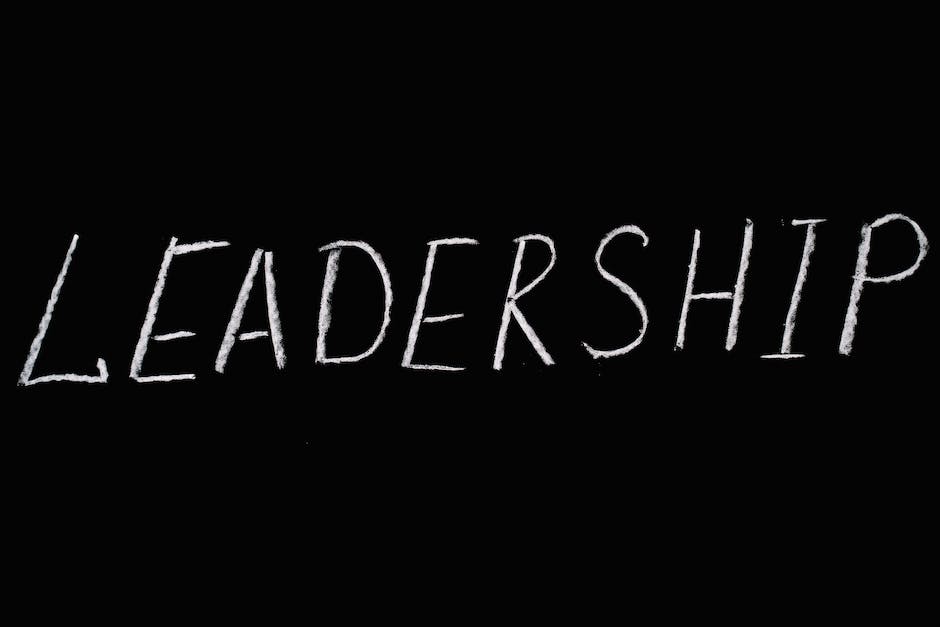Leadership is a fascinating and complex phenomenon, which surfaces as a fundamental cog in the wheel of personal growth, corporate success, and societal advancement. It is presented in various forms and is manifested in diverse ways, often oscillating between subtlety and vigor. The essence of leadership stretches way beyond mere managing, commanding a deeper understanding and a well-defined purpose. This discourse aims to delve into the heart of the leadership concept, explore the defining qualities of a successful leader, guide on nurturing leadership skills, illustrate the role of leadership in team building, and highlight the challenges often faced along with effective strategies for mitigation.
Understanding the Concept of Leadership
Understanding the Concept of Leadership: The Foundation of Effective Skills
Leadership is a multifaceted concept with varying interpretations and scope. Yet, at its core, leadership primarily involves influence and the ability to guide individuals or groups toward the achievement of predetermined goals. It entails decisiveness, strategic thinking, resilience, empathy, and the capacity to inspire and motivate. These attributes, molded and finessed over time, equip an individual with the potential to steer others successfully.
While leaders often occupy positions of authority, this is not a requisite for leadership. Rather, one’s ability to inspire others to action, even in the absence of formal power, conveys true leadership.
Leadership Vs. Management: Difference in Approach and Focus
Although the terms ‘leadership’ and ‘management’ are often used interchangeably, there are distinct differences. Managers work towards achieving organizational efficiency by focusing on systematic planning, coordination, and execution. They thrive on stability and control, using their authority to make decisions and solve problems.
Leaders, on the other hand, typically transcend operational and immediate tactical aspects. They focus on setting out a vision, fostering innovation, and bringing about change. Leaders lead people, whereas managers manage tasks. While both are important in an organization, leaders use their influence rather than authority to motivate their team and stimulate productivity.
Exploring Different Leadership Styles
Leadership comes in many forms, each bringing its own unique set of traits to the table. Contemporary leadership literature and practice encompass a variety of styles, including:
- Autocratic Leadership: This style centers around a leader who takes charge and makes crucial decisions with minimal input from team members. Ideal in high-stakes, rapid-response environments, this type of leadership can be highly effective.
- Democratic Leadership: Contrary to autocratic leadership, democratic leaders foster an inclusive atmosphere where team participation in decision-making is not only encouraged but is a norm. Respect, trust and commitment, coupled with an increased feeling of ownership lead to elevated employee satisfaction.
- Transformational Leadership: Transformational leaders are change agents, who motivate individuals to exceed their personal goals and work towards the larger vision of the organization. Teams, companies, or even entire systems can be reshaped under this style of leadership.
- Laissez-faire Leadership: Offering plenty of autonomy, leaders who adopt a laissez-faire approach intervene minimally in tasks. It works best when team members are highly competent and work effectively with minimal supervision.
- Servant Leadership: Servant leaders put the needs and growth of their team first. Through a supportive culture that promotes both personal and professional development, this type of leadership fosters a nurturing environment.
However, it is crucial to remember that the success of these leadership styles is not universal, but highly context-dependent. Effectiveness can profoundly hinge on the leader’s flexibility and adaptability in applying the appropriate style based on the situation and individuals involved.

Key Qualities of an Effective Leader
Essential Qualities of an Effective Leader
Headlining the list of essential leadership qualities is potent communication. Effective leaders need to masterfully articulate complex ideas, project updates, and organizational objectives. Strong speaking and active listening skills, empathetic communication and transparent information sharing aren’t just desirable, but fundamental to ensuring team members carry out their tasks efficiently.
Strategic thinking follows next. Effective leaders are visionaries who can see the bigger picture, foresee future trajectories and guide the team or organization towards achieving their goals. They also depend on a mix of their industry experience, various viewpoints, and continuous learning to stay ahead of the curve.
Another important attribute is emotional intelligence, which encompasses self-awareness, self-management, social awareness, and relationship management. A high degree of emotional intelligence enables leaders to understand and regulate their own emotions and those of their team, contributing to a healthier, more productive work environment.
Counted fourth in line, but not any less important, is integrity. A leader of integrity who acts ethically and stands for justice, irrespective of the circumstances, can foster a deep-seated trust and respect among team members and stakeholders, thus cultivating a collaborative work culture.
Finally, the ability to inspire and motivate is critical in a leader’s role. Great leaders set strong examples and appreciate their team’s accomplishments, stirring them to push their boundaries and strive for unparalleled excellence.
Developing Essential Leadership Characteristics
For aspiring leaders across industries, honing effective communication skills can prove invaluable. One way to achieve this is through attending communication workshops or public speaking classes, which emphasize clarity and conciseness. Regular practice of active listening in daily interactions also enhances your communication prowess.
Strategizing is also a key aspect of leadership. This can be fostered by long-term exposure to varied situations, continuous learning, and seeking mentorship. Pursuing courses or attending seminars focusing on strategic thinking demonstrate its practical utility. Routinely consuming industry-related literature and staying abreast with current trends also contribute to strategic foresight.
Enhancing emotional intelligence is another stepping stone towards effective leadership. Taking an emotional intelligence assessment, consulting with a coach, or engaging in activities promoting mindfulness and empathy like meditation or volunteering can be beneficial. Participating in team-building exercises is also a great way to foster emotional intelligence.
Integrity is a sine qua non for a leader. Upholding strong moral principles become a part of one’s character through building personal and professional accountability. Upholding honesty and transparency can also accentuate one’s integrity.
Additionally, the capacity to motivate and inspire others is a leadership trait that can be refined by comprehending what motivates individuals or teams. For this, empathy, active listening, and a sincere interest in others’ success come into play. Leaders should know how to recognize and utilize the strengths of team members for achieving common goals.
Recognizing the significance of these qualities and consistently striving towards sharpening these can help any individual morph into an efficient leader who leads with composure and confidence, resulting in a positive impact within their organization.
Developing Leadership Skills
Fundamentals of Leadership Skills: The Backbone of Efficient Leadership
Displaying proficiency in leadership skills is a requisite for successful management, be it in a small-scale enterprise, a global corporation, or a non-profit organization. Primary among these skills are strategic thinking, communication, decision-making, and problem-solving capabilities. Apart from these abilities, essential character traits like empathy, integrity, bravery, resilience, and a high emotional intelligence quotient are integral to leadership. Fundamentally, leadership requires setting a purposeful vision, motivating others, and leading them to attain their mutual objectives.
Nurturing Inherent Qualities: Capitalizing on Natural Traits
Not everyone is born a leader, but many possess inherent qualities that position them to be effective leaders. Traits such as empathy, resilience, and high emotional intelligence often come naturally to some. For those individuals, it’s crucial to recognize these traits and continue to nurture them. This can be done through consistently applying these traits in their daily lives and challenging themselves to use these natural abilities in new and different ways.
This doesn’t mean that those without these inherent qualities cannot become effective leaders. It just means they might need to work harder in identifying and honing those skills.
Acquiring New Skills Through Experiences, Training, and Education
Leadership skills can also be learned through direct experiences, formal training programs, and academic education.
Direct experiences, such as leading a project or team, offer valuable opportunities to learn and grow as a leader. Experiences can teach individuals how to motivate others, make difficult decisions, and navigate conflicts, among other things.
Formal training programs, on the other hand, are designed to teach leadership concepts, principles, and techniques. These programs often involve simulations, exercises, and case studies that allow participants to practice their leadership skills in a safe environment.
Finally, academic education can provide theoretical knowledge about leadership. Courses in business administration, psychology, sociology, and organizational behavior, for example, can offer insights into effective leadership.
Utilizing Feedback for Leadership Development
Feedback is a crucial part of leadership development. It allows individuals to gain insights into their strengths and weaknesses, understand how others perceive them, and identify areas for improvement. Feedback can come from a variety of sources, including colleagues, subordinates, and managers. It might even come in the form of performance reviews, 360-degree feedback, or coaching sessions.
Self-reflection as a Tool for Leadership Development
Another critical tool for leadership development is self-reflection. This involves taking time to closely evaluate one’s actions, decisions, and overall performance as a leader. Through self-reflection, individuals can identify areas where they excelled, as well as areas where they need improvement. This can help individuals understand their leadership style, how it affects others, and how it can be improved. Self-reflection also promotes personal growth, fostering a growth mindset that is crucial for effective leadership.
It’s clear that honing leadership skills is an ongoing endeavor.
This involves nurturing existing qualities, acquiring new abilities through experiences, learning and training, using feedback effectively, and maintaining a practice of self-reflection. While each person’s route to leadership is unique, a dedication to continual personal growth and learning is undoubtedly the cornerstone of successful leadership.

The Role of Leadership in Team Building and Maintenance
Realizing the Importance of Leadership in Fostering Teams
Strong leadership is vital for the creation, coordination, and upkeep of high-performing teams. Whether it’s in a corporate setting or a community group, leaders are essential in providing guidance, settling disagreements, promoting cooperation, and nurturing a positive work environment. A leader’s contribution can truly transform a group of individuals into a unified team, all striving towards one shared objective.
Setting the Team’s Direction
An essential aspect of effective leadership is setting clear and concise goals for the team. Leaders articulate the organization’s vision and outline the steps required to achieve this vision. This clarity gives team members a sense of purpose. A team with a clearly defined direction and objectives can focus its collective energy towards reaching these goals, thereby enhancing productivity and cooperation.
Resolving Conflicts
Conflicts are inevitable in any environment where individuals with different perspectives and ideas come together. An effective leader identifies potential conflicts and swiftly resolves them before they escalate and harm team harmony. Leaders need to develop strong problem-solving skills and act impartially when resolving disputes. Successfully addressing conflicts not only helps maintain team harmony but also builds trust among team members.
Fostering Collaboration
Leaders are crucial in establishing a collaborative work environment. They accomplish this by promoting open communication, fostering mutual respect, and encouraging cooperation among team members. By creating a platform where everyone feels heard and appreciated, leaders cultivate a sense of community within the team. Collaboration is the key to unlocking innovation and creativity, leading to the team’s success and development.
Creating a Positive Work Culture
Leaders shape the team’s culture and dynamics, thereby creating a positive work environment. Actions and attitudes exhibited by leaders can significantly influence team morale. Therefore, it’s important for leaders to exhibit positivity, remain approachable, and uphold respect, integrity, and fairness, which serve as behavioral benchmarks for team members. A positive work culture boosts productivity and promotes high levels of job satisfaction.
Continual Motivation and Encouragement
Motivation is a leader’s best tool to inspire team members to put their best foot forward. By recognizing and applauding the efforts of their team, leaders not only enhance the team’s morale but also instill a sense of loyalty and commitment. Regular feedback, both positive and constructive, helps team members understand expectations, enhances performance, and contributes to personal growth.
Conclusion: The Crucial Role of Leadership in Team Development and Sustenance
Exceptional leadership is the main driving force for creating, developing and maintaining a dynamic and synergistic team. Leaders make this possible by laying out transparent objectives, expertly mediating disputes, promoting teamwork, cultivating a positive work environment, and consistently inspiring and driving team members. By undertaking these roles, leaders not only guarantee the stability, effectiveness, and triumph of the team but also significantly contribute towards the entire organization’s success.

Challenges in Leadership and Overcoming Them
Deciphering the Challenges Faced by Leaders
Leading a team isn’t a simple task, given numerous hurdles that must be skillfully tackled for proficient leadership. These hurdles typically involve steering through changes, mediating disputes, and counteracting resistance to authority. In light of these, it becomes clear that a comprehensive understanding of these pain points is vital for establishing and maintaining effective leadership.
Dealing with Change
Change is inevitable in any organization. However, it can breed uncertainty, fear, and resistance if not effectively managed. As a leader, introducing new strategies, technology, or procedures can create confusion if not thoroughly communicated. Employees may feel that their job security is threatened or fear that they lack the skills to adapt to the change, leading to resistance.
Overcoming this challenge requires timely and transparent communication. A leader should ensure that changes are communicated clearly, and the reasons for the changes are explained. The leader should also provide adequate training to staff to adapt to the change and provide emotional support where necessary. By doing so, resistance to change is likely to reduce.
Handling Conflicts
Conflicts are commonplace in any workplace. They may arise due to disagreements, misunderstandings, or communication breakdowns between team members. Conflicts, if not managed properly, can lead to reduced productivity, lower morale, and heightened tension within the organization.
Effective leadership involves adopting conflict resolution skills, including active listening, respectful communication, and mediation. As a leader, it’s important to encourage open communication, forming a basis for understanding every party’s perspective. Also, providing a safe space for airing grievances can prevent conflicts from escalating.
Overcoming Resistance to Leadership
Resistance to leadership can create a significant obstacle to progress. Sometimes, this resistance may stem from perceived favoritism, lack of trust, or disagreements with leadership styles.
To overcome leadership resistance, leaders need to build trust by being transparent, honest, and fair. They should assure the team that everyone will be treated equally and that the main focus is on achieving organizational goals. Additionally, inviting feedback from team members and consideration of their ideas can make them feel valued and included, thus reducing resistance.
Practical Strategies for Overcoming Leadership Challenges
Facing and overcoming these leadership challenges often requires one to be equipped with effective leadership skills and strategies. Here are some practical strategies:
- Open Communication: Providing clear direction and expectations can minimize ambiguity and improve work outcome. Regular feedback and open discussion channels can foster a culture of trust and mutual respect.
- Training and Development: Constant learning helps both leaders and followers adapt to evolving changes. Training programs can enhance skills and increase productivity.
- Emotional intelligence: Leaders need to understand and manage their emotions and those of others. Being empathetic can help in conflict resolution and improve team harmony.
- Decision-Making: Leaders must be decisive. Making timely and informed decisions can increase team confidence and promote efficiency.
By integrating these strategies with flexibility, resilience, and a focus on continuous improvement, leaders can overcome the varies challenges and thrive in their roles.

Akin to navigating a vessel through uncharted seas, leadership often comes with myriad challenges from handling conflicts and resistance to managing change. While these may seem daunting, the development of a set of core skills can prove instrumental in overcoming these obstacles. Drawing on strong communication, strategic thinking, emotional intelligence, integrity, and a capacity to inspire, leaders can forge productive work environments, foster a cohesive team, and steer their organizations towards desired goals. It is, however, fundamental to remember that effective leadership is not merely about acquiring skills but also revisiting, refining, and reinventing them in the ever-evolving landscape of the professional world. Ultimately, effective leadership is about fostering growth, nurturing potential, inspiring change, and impacting lives, all the while creating a fulfilling journey, both for oneself and others.
